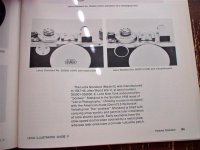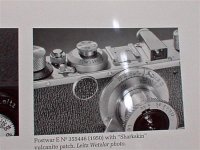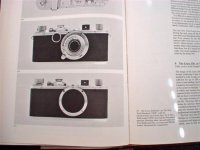jesse1dog
Light Catcher
Nice Leica!
Nice Leica!
Hi
Have you measured the body length?
If its a IIIc derivative it will be that bit longer.
Leica 'repaired' cameras using new parts and also upgraded on request. If a body shell was replaced I believe they used the old number on the new shell. I would imagine that this is what happened in this case.
Nice camera by the look of it.
Going for a CLA?
j
Nice Leica!
Hi
Have you measured the body length?
If its a IIIc derivative it will be that bit longer.
Leica 'repaired' cameras using new parts and also upgraded on request. If a body shell was replaced I believe they used the old number on the new shell. I would imagine that this is what happened in this case.
Nice camera by the look of it.
Going for a CLA?
j




